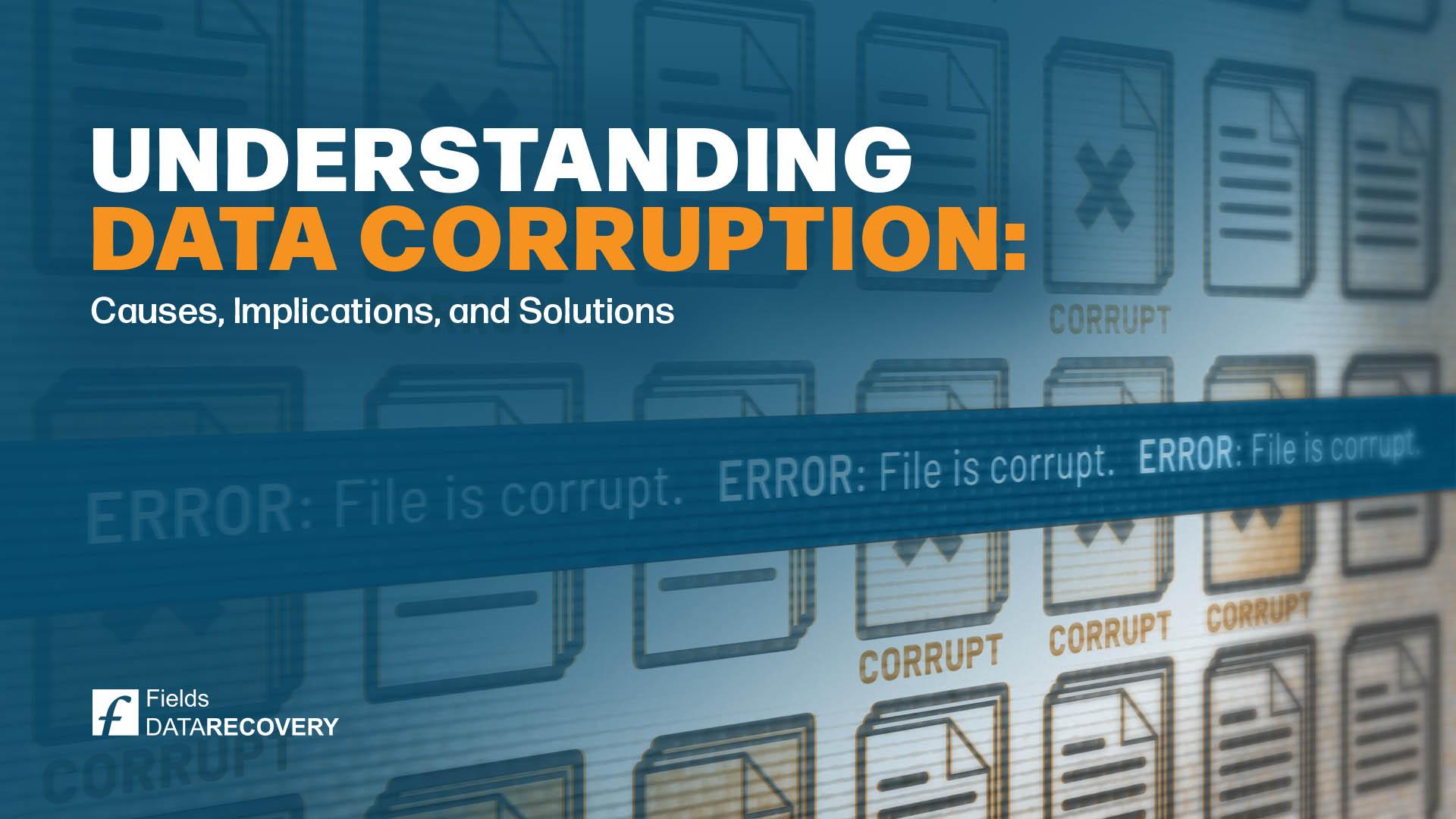Understanding Data Corruption: Causes, Implications, and Solutions

In the vast landscape of data management, one term that often sends shivers down the spine of any IT professional or data user is "corruption." It's the digital equivalent of a haunting spectre, capable of wreaking havoc on even the most meticulously organised datasets. But what exactly does "corrupt" mean in the realm of data, and why should it be a concern for businesses and individuals alike?
Unveiling the Enigma: What is Data Corruption?
At its core, data corruption refers to any unintended change or alteration in the original form or structure of data. Imagine a digital file—a document, an image, a video, or even a database—being tampered with in a way that renders it unreadable, unusable, or unreliable. This alteration can occur due to various factors, ranging from hardware malfunctions to software bugs, human error, or malicious intent.
The Many Faces of Corruption: Causes and Manifestations
Data corruption can manifest in numerous ways, each with its unique set of causes and consequences. Some common scenarios include:
Bit Rot: Over time, storage media can degrade, leading to the loss or alteration of bits of data. This gradual deterioration, often referred to as "bit rot," can silently corrupt files stored for extended periods.
Hardware Failures: Faulty hard drives, memory modules, or other storage devices can introduce errors into stored data. These errors might occur due to physical damage, manufacturing defects, or wear and tear over time.
Software Bugs: Flaws in software applications or operating systems can inadvertently modify data during processing or storage. This can range from minor glitches to critical vulnerabilities exploited by malware.
Human Error: Accidental deletions, improper handling of data, or mistakes during data entry can lead to corruption. Human errors are often overlooked but can have significant consequences if not addressed promptly.
Malicious Activities: Cyberattacks, such as viruses, ransomware, or deliberate tampering by malicious actors, can corrupt data with the intent to disrupt operations, steal information, or cause financial harm.
The Ripple Effect: Implications of Data Corruption
The ramifications of data corruption extend far beyond the immediate loss of information. Depending on the context and severity, the consequences may include:
Financial Loss: Businesses may incur substantial financial losses due to corrupted data, including expenses associated with data recovery efforts, downtime, lost productivity, and potential legal liabilities.
Reputation Damage: Data corruption can erode trust and damage the reputation of organisations, especially if sensitive or confidential information is compromised. This can lead to a loss of customers, partners, and stakeholders.
Operational Disruption: Critical systems and processes may grind to a halt in the event of data corruption, disrupting operations and jeopardising business continuity. This can have cascading effects on supply chains, customer service, and overall organisational efficiency.
Data Integrity Concerns: Corrupted data undermines the integrity and reliability of information systems, compromising decision-making processes and hindering the ability to derive meaningful insights from data analytics.
Navigating the Storm: Strategies for Prevention and Recovery
While data corruption can be daunting, proactive measures can mitigate its impact and enhance resilience. Key strategies include:
Regular Backups: Implementing robust backup procedures ensures that copies of data are available for recovery in the event of corruption or loss. Regularly verify backups to ensure their integrity.
Data Validation: Employ checksums, data validation algorithms, and error-detection mechanisms to identify and correct data corruption proactively.
Hardware Monitoring: Monitor the health and performance of storage devices using diagnostic tools and predictive maintenance techniques to detect potential failures before they lead to data loss.
Security Measures: Implement robust cybersecurity measures, including firewalls, antivirus software, intrusion detection systems, and access controls, to prevent malicious activities that could lead to data corruption.
Education and Training: Educate employees about best practices for data handling, security protocols, and procedures for reporting and addressing potential data corruption incidents.
Conclusion
In an era defined by the exponential growth of digital information, the spectre of data corruption looms large, posing significant challenges for organisations and individuals alike. Understanding the causes, implications, and mitigation strategies is crucial for safeguarding valuable data assets and maintaining operational resilience in the face of adversity. By embracing proactive measures and fostering a culture of data integrity, we can navigate the complexities of the digital landscape with confidence and resilience.
Should you find yourself facing the daunting prospect of data loss or corruption, remember that you're not alone.
Fields Data Recovery stands ready to assist you in your time of need. With our expertise and state-of-the-art recovery techniques, we specialise in retrieving lost or corrupted data from a variety of storage media and devices.
Don't hesitate; contact Fields Data Recovery today at 0800 083 7891 or visit fields-data-recovery.co.uk to learn more about our services and how we can help you restore your valuable data.
